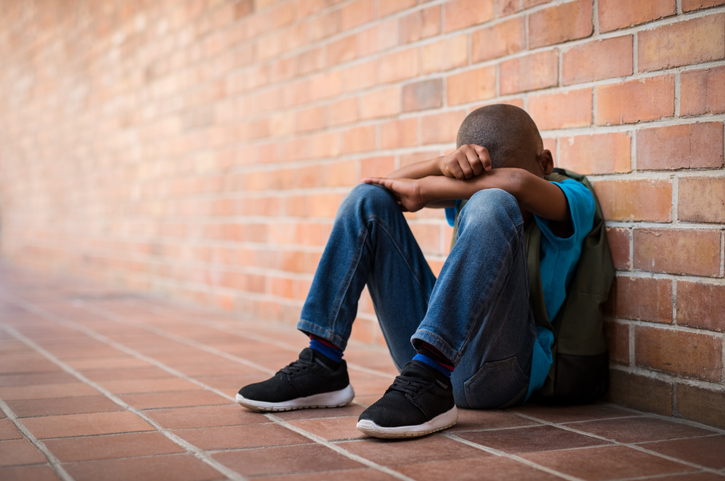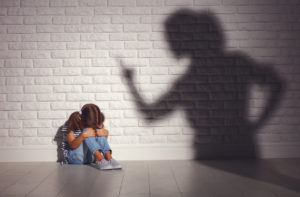
Stress is Built in to Our Society
Stress is often overlooked as a social determinant of health. Our social situations have a direct impact on how much stress we endure, which, in turn, will have an unequivocal influence on our health. Understanding the different forms of stress is an important step in learning how to avoid its negative health effects.
 Stress is something we have come to accept as a part of daily adult life. The frustration of rush hour traffic, deadlines at work, and waiting in long lines at the supermarket are now expected and almost accepted forms of stress. While it would be ideal to eliminate stress, we do what we can to manage it.
Stress is something we have come to accept as a part of daily adult life. The frustration of rush hour traffic, deadlines at work, and waiting in long lines at the supermarket are now expected and almost accepted forms of stress. While it would be ideal to eliminate stress, we do what we can to manage it.
Unfortunately, chronic stress has a negative effect on overall health, resulting in the increased incidence of ailments such as high blood pressure, obesity, diabetes, heart disease and even cancer.
Identifying Different Forms of Stress
- Positive Stress: This type of stress involves a brief and relatively minor event, such as taking a test or meeting new people. In the context of a healthy, stable environment, these situations provide an opportunity to develop healthy responses to adverse reactions.
- Tolerable Stress: Tolerable stress presents a greater magnitude of adversity or threat. Examples include illness or death of a family member, divorce, or a natural disaster. Damaging effects of tolerable stress can be mitigated through supportive relationships that positively affect coping abilities.
- Toxic Stress: This is the most debilitating form of stress, which develops with strong, frequent, or prolonged exposure to things like neglect, abuse, and violence, without the buffer of supportive surroundings. With toxic stress, damaging effects are compounded by perceived loss of control, which can be amplified by living in an environment of poverty or social inequality.
Children are Most Affected by Toxic Stress

While positive and tolerable stresses are both easily managed with a strong family foundation, toxic stress can have catastrophic effects on a child’s development, including their physical and mental health. At the fetal, infant, and even early childhood stages, their still-developing brains are especially susceptible to stress-related biological influences. Stress experienced by an expectant mother transfers directly to the child she carries.
Elevated levels of stress hormones disrupt the formation of the brain’s architecture, primarily affecting the following areas:
- Amygdala (emotion, mood control, anxiety and fear)
- Hippocampus (long-term memory, spatial navigation)
- Prefrontal Cortex (executive function, decision making, moderating social behavior)
The Tiniest are the Most Vulnerable
Additionally, there seems to be a long-term effect — exposure to stress hormones in-utero continues to affect children long after their birth, whether or not stress levels diminish throughout childhood. This is particularly tragic because children who begin their lives under these conditions are at an immediate and perpetual disadvantage. These innate burdens often prove exceptionally difficult to overcome, especially in a society that continually fails to promote equality.
While exploring the infinite ways toxic stress can affect lives, the monumental and potentially devastating nature of the problem becomes clear. Children remain victims of the cyclical relationship between toxic stress and lifelong issues with behavior, development, and health. This affects their academic performance and could determine if life takes them down a path of achievement and gainful employment or to a life of poverty and/or crime.
The Cycle Continues
 Adults who have suffered adverse childhood experiences are more likely to abuse tobacco, drugs, and alcohol, and to indulge in gambling, promiscuity and other risky health behaviors. These actions often lead to violent crime, incarceration, unemployment, poverty, teen pregnancy and single parenthood. Consequently, the high-risk individuals who are likely to become parents are less likely to provide the stable environment necessary to protect their own children from the same fate. As stated by the American Academy of Pediatrics,
Adults who have suffered adverse childhood experiences are more likely to abuse tobacco, drugs, and alcohol, and to indulge in gambling, promiscuity and other risky health behaviors. These actions often lead to violent crime, incarceration, unemployment, poverty, teen pregnancy and single parenthood. Consequently, the high-risk individuals who are likely to become parents are less likely to provide the stable environment necessary to protect their own children from the same fate. As stated by the American Academy of Pediatrics,
“This intergenerational cycle of significant adversity, with its predictable repetition of limited educational achievement and poor health, is mediated, at least in part, by the social inequalities and disrupted social networks that contribute to fragile families and parenting difficulties.”
Continuing to ignore the effects of chronic stress will result in a “pay now or pay later” conundrum — a never ending cycle of poor health, lack of education, crime, and poverty that costs our nation billions.
Although it won’t completely rid us of all our ailments, it behooves us to shift the focus of preventative health care from the doctor’s office to the community. If we don’t make the necessary decision to focus our time and resources on social change, our society is deliberately choosing to “pay later”, placing billion dollar band aids on problems that will never go away.




Childhood bereavement is a serious and prevalent public health issue that can have a profound impact on the future well being and mental and physical health of a child. Those of us working in the field of childhood bereavement are gratified by the CDC’s decision to add the death of a parent and other childhood traumas to their original list of ACEs. The death of a parent is a traumatic event with children in grief at risk for poor school performance, substance abuse, teen pregnancy, suicide, depression and eating disorders. Experiencing a significant death or other adverse childhood experience or traumatic loss during childhood often results in profound stress and adversity and impacts brain development. Without appropriate support, grief and traumatic stress can derail a child’s development. For youth who are bereaved or traumatized, access to comprehensive grief-focused, trauma-informed care and resources are essential. Today in NJ there are over 109,000 bereaved youth age 0-18. Nationally 1 in 15 youth age 0-18 will experience the death of a parent or sibling by age 18. As is stated here the CDC’s Adverse Childhood Experiences Study uncovered a stunning link between childhood trauma and chronic diseases and social and emotional problems. This includes heart disease, lung cancer, diabetes and many autoimmune diseases, as well as depression, violence, being a victim of violence, and suicide. Walk into any 12-step meeting, psychiatric unit, prison, or therapists office and you will hear nothing but stories of unresolved grief and loss. Supporting youth at the time of their loss is essential.
The need for grief support is relevant for every community that cares about providing emotional support for children during all the times in their lives when they are struggling with painful emotions and traumatic loss. Extra efforts at education, intervention and prevention must be made to reduce the risk that children will have a negative reaction to loss. Grief can provide a doorway to transformation and growth for children and adults, and for our world. Providing support for grieving children is a decision that must be made consciously by each individual, collectively as a community, and together as a society.